PALLIDA Walther, 1938 (engl./ fr.)
Series Gibbiflorae
Etymology : Latin adjective pallidus. Refers to the pale yellowish-green colour of the leaves.
Type : From a plant found in cultivation in Mexico City, said to have come from near Cordoba, CAS 251053 (E. Walther, 1935).
Distribution : No wild locality known. According to T. MacDougall it was also in cultivation in Chiapas (Cintalapa, Tuxtla Gutierrez, Ocozocoaultla) and according to Ch. Uhl plants collected by T. MacDougall at Juchitán, Oaxaca, appeared to be a close match. They however were diploid while the plant Walther described was tetraploid.
Description by E. Walther (CSJ US 10: 14-15, 1938, and Echeveria, 194-196, 1972) :
Stem Stems to 10 cm tall and 3 cm thick, at first simple, but ultimately giving off numerous branches from below that take root, forming large clusters.
Leaves laxly-rosulate, obovate-spatulate, to over 15 cm long and 9 cm broad, apex rounded and mucronate, narrowed at base into thick petiole, deeply channelled above near base, sharply keeled beneath at base and petiole, color unusually pale, corydalis-green when young, to asphodel- or deep-chysolite-green, edges rarely vinaceous-russet.
Inflorescence paniculate, 50 cm. tall or more, peduncle stout, erect, lower bracts many, spreading, obovate, mucronate, thick at base, to 60 mm long by 35 mm broad, color light-elm-green, slightly glaucous, branches 8 or more, strongly nodding before anthesis, sometimes bifid, upper bracts excepionally broad, to 12 mm wide, ovate, not recurved, to 20 mm long, acute, pedicels short, 6 mm. long, stout, stipitately thickened below calyx, color light-vinaceous-lilac while pulverulent, otherwise acajou-red.
Flowers : sepals much connate at base, covering base of corolla, very unequal, deltoid-ovate to oblong-oblanceolate, longest to 14 mm long, often keeled, color kildare-green in bud, later vinaceous-lilac, glaucous, corolla cylindric-campanulate, 16 mm long, 12 mm thick at base, to 16 mm in diameter at the open mouth, color scarlet-red, alizarine-pink with bloom intact, segments ovate-oblong, deeply hollowed at base, the widely spreading tips subulate-acute, color within palest maize-yellow, finely lined with scarlet towards apex, carpels slender, 13 mm long, tapering from base into the long and slender styles, color of carpels whitish, of styles amaranth-purple at base, dahlia-purple above, nectaries reniform, depressed, 2 mm wide, whitish.
Flowers in December.
Cytology : n = 54
Link to a summary of the above description in English and French
Note :
E. pallida is closely related to E. gibbiflora and E. gigantea. As it has never been found in the wild in Mexico, it has been speculated that E. pallida might be of hybrid origin. However in his paper on Chromosomes and hybrids of Echeveria (Crassulaceae) VII. Series Gibbiflorae (Baker) Berger, Ch. Uhl does not confirm this (Haseltonia 9: 141, 2002).
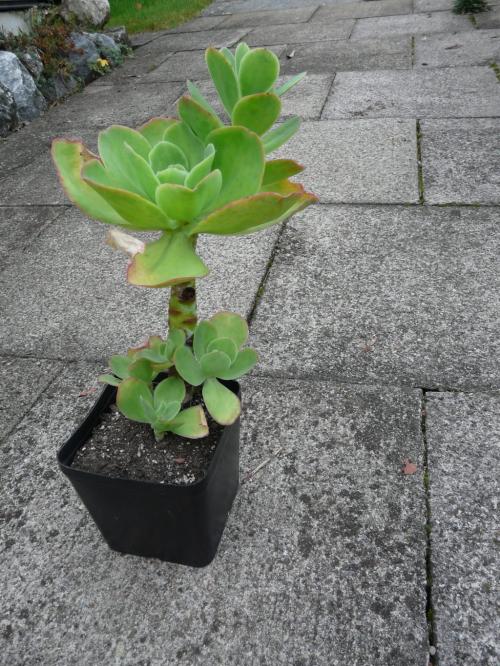
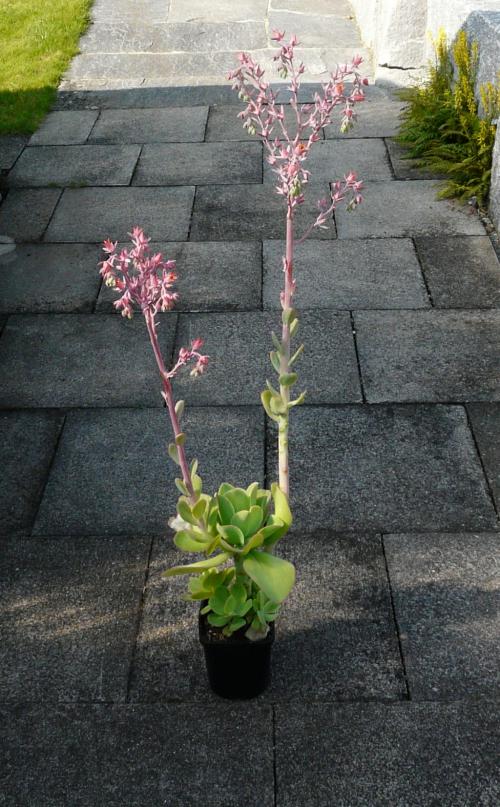
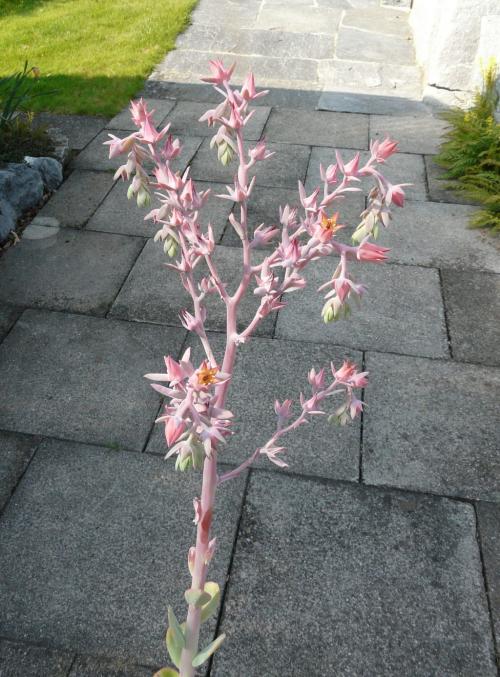
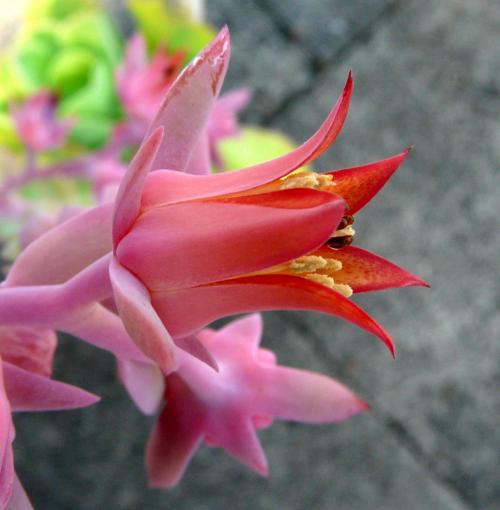
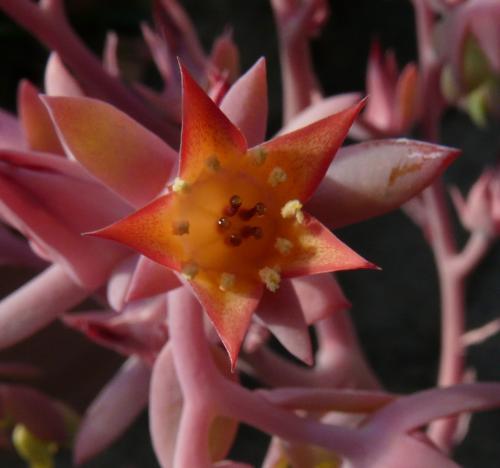
Sepals very unequal / Sépales très inégaux :
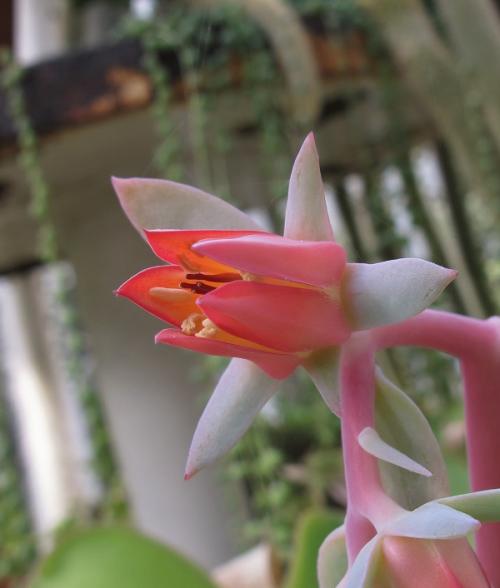
Photo Thomas Delange